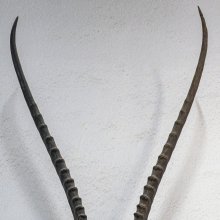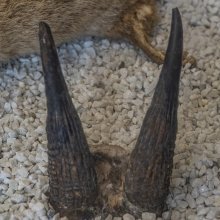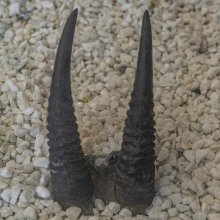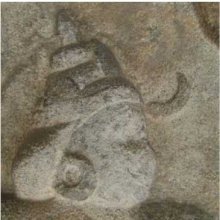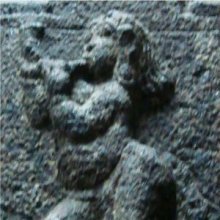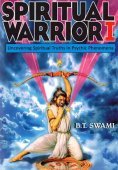Horn: 2 definitions
Introduction:
Horn means something in Hinduism, Sanskrit, the history of ancient India. If you want to know the exact meaning, history, etymology or English translation of this term then check out the descriptions on this page. Add your comment or reference to a book if you want to contribute to this summary article.
Images (photo gallery)
(+29 more images available)
In Hinduism
Vastushastra (architecture)
Source: Shodhganga: Elements of Art and Architecture in the Trtiyakhanda of the Visnudharmottarapurana (vastu)Horns (of bull and buffalo) were traditionally used in crafting Hard Cement, which was used as a Material for the Construction of Temples and other buildings, according to the Viṣṇudharmottarapurāṇa, an ancient Sanskrit text which (being encyclopedic in nature) deals with a variety of cultural topics such as arts, architecture, music, grammar and astronomy.—In the Viṣṇudharmottarapurāṇa, five procedures of preparing the vajralepa are suggested.—The third variety of vajralepa was the mixture of the horns of bull and buffalo, skin of goat, milk of buffalo, juice of bimba and kapittha.

Vastushastra (वास्तुशास्त्र, vāstuśāstra) refers to the ancient Indian science (shastra) of architecture (vastu), dealing with topics such architecture, sculpture, town-building, fort building and various other constructions. Vastu also deals with the philosophy of the architectural relation with the cosmic universe.
India history and geography
Source: Singhi Jain Series: Ratnaprabha-suri’s Kuvalayamala-katha (history)Horns (of a bull) were commonly depicted on the Saṃsāracakra paintings (representing scenes of animal life), in ancient India, as mentioned in the Kathās (narrative poems) such as Uddyotanasūri in his 8th-century Kuvalayamālā (a Prakrit Campū, similar to Kāvya poetry).—Page 185.21 f.: Here follows a description of a printed scroll illustrating the Jaina conception of saṃsāracakra. [...] The saṃsāra-cakra illustrated the three worlds of hell, human world and the world of gods. [For example:] Fight between a tiger and a wild bull, and killing of a tiger with bull horns.

The history of India traces the identification of countries, villages, towns and other regions of India, as well as mythology, zoology, royal dynasties, rulers, tribes, local festivities and traditions and regional languages. Ancient India enjoyed religious freedom and encourages the path of Dharma, a concept common to Buddhism, Hinduism, and Jainism.
See also (Relevant definitions)
Starts with: Horn nut, Horn palm, Hornbeam, Horned clover, Horned gardenia, Horned spurge, Horned-pondweed, Hornstedtia arunachalensis, Hornstedtia costata, Hornstedtia fenzlii, Hornstedtia havilandii, Hornstedtia scyphifera, Horny goat weed.
Query error!
Full-text (+881): Shringa, Vishana, Sasavisana, Kunika, Khadga, Shringaka, Sharnga, Goshringa, Antarashringam, Vishanin, Gavala, Stuka, Bharashinga, Koti, Shingada, Shingatanem, Adrishringa, Singa, Shringantara, Kshidra.
Relevant text
Search found 330 books and stories containing Horn, Horns, The horn; (plurals include: Horns, Hornses, The horns). You can also click to the full overview containing English textual excerpts. Below are direct links for the most relevant articles:
Manusmriti with the Commentary of Medhatithi (by Ganganatha Jha)
Verse 8.234 < [Section XXXIX - Disputes between Owner and Keeper]
Verse 5.120 < [Section XIII - Purification of Substances]
Verse 4.67 < [Section IX - Personal Cleanliness]
Vaisheshika-sutra with Commentary (by Nandalal Sinha)
Sūtra 2.2.18 (Causes of Doubt or Disbelief—continued) < [Chapter 2 - Of the Five Bhūtas, Time, and Space]
Sūtra 2.1.8 (Use of Inference) < [Chapter 1 - Of Earth, Waters, Fire, Air, and Ether]
Sūtra 10.1.2 (Pleasure and Pain are not forms of cognition) < [Chapter 1 - Of the Attributes of the Soul]
Brahma Sutras (Shankaracharya) (by George Thibaut)
II, 2, 26 < [Second Adhyāya, Second Pāda]
II, 2, 17 < [Second Adhyāya, Second Pāda]
II, 1, 18 < [Second Adhyāya, First Pāda]
Hindu Architecture in India and Abroad (by Prasanna Kumar Acharya)
Hindu Architecture in Sumatra < [Chapter 10 - Hindu Architecture in Insulindia]
Appendix 2 - The Future of Indian Architecture
Introduction to Buddhist Architecture < [Chapter 3 - Classical or post-Vedic Architecture]
Brihat Samhita (by N. Chidambaram Iyer)
Chapter 4 - On the course of the Moon (candra-cāra)
Chapter 57 - On durable cement (vajralepa-lakṣaṇa)
Chapter 67 - On the features of the Elephant (hasti-lakṣaṇa)
Tattvasangraha [with commentary] (by Ganganatha Jha)
Verse 1651-1654 < [Chapter 19d - (D) On negation (abhāva)]
Verse 895 < [Chapter 16 - Examination of the Import of Words]
Verse 1372-1379 < [Chapter 18 - Inference]
Related products
